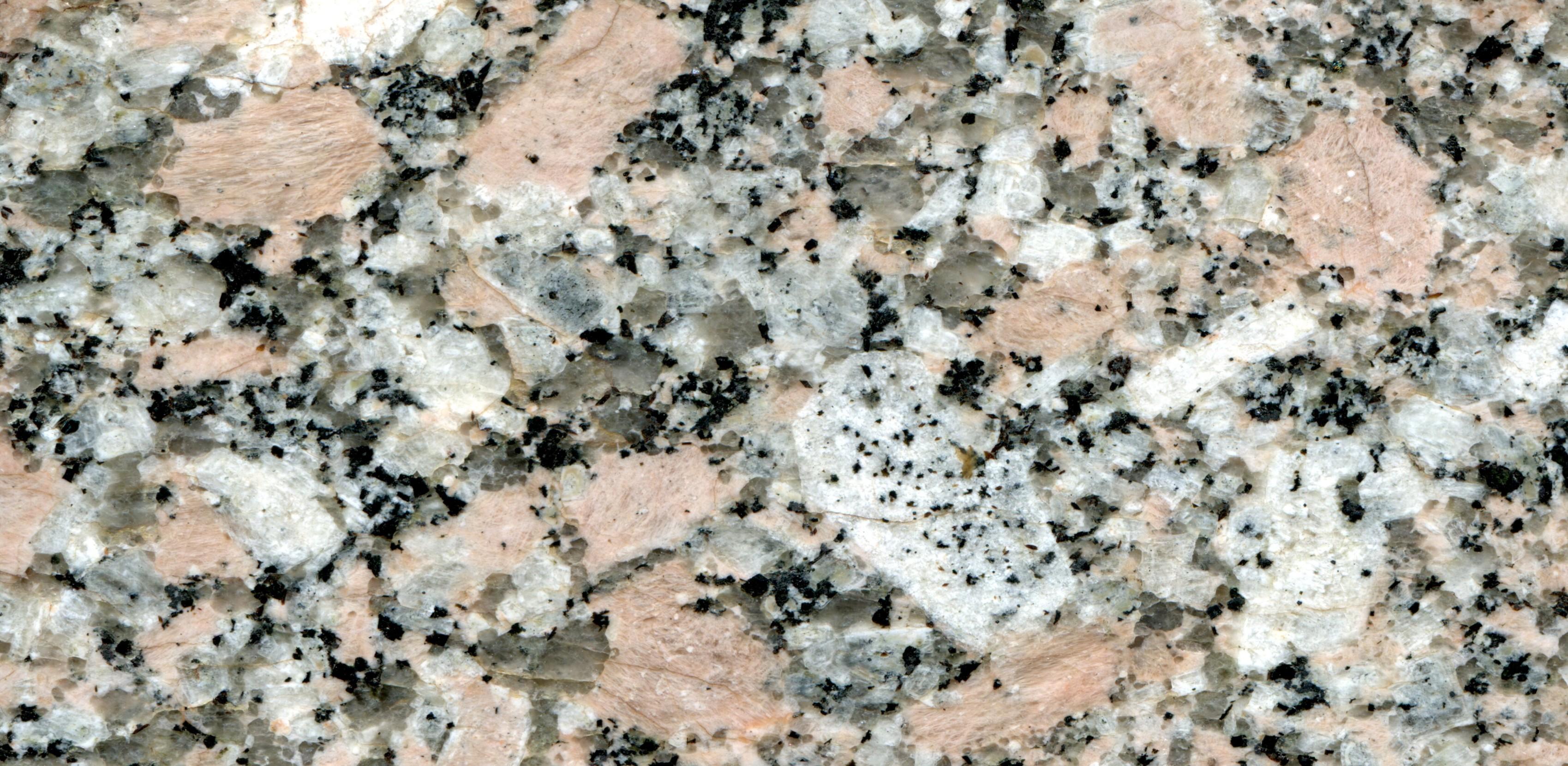
Submitted by Dr C.M. Martin-Jones on Tue, 17/09/2024 - 11:36
New evidence confirms that all but the final stages of megacryst formation occur in magma that is still relatively fluid, rather than a locked-up crystal mush.
The Shap Granite of northwest England has gained celebrity status amongst Cambridge Earth Science students because it is one of the first rocks they see in practical classes.
Known as G5a in Cambridge, this granite contains large ‘megacrysts’ of pink potassium feldspar that make it distinctive and easy to identify—not just in class but also on high streets across the UK, where it is often used as a decorative building stone.
Geology undergraduates learn that megacrysts (which reach several centimetres in size) grow slowly, as magma cools and solidifies into granite. The fact that megacrysts form relatively early in the crystallisation sequence gives them time to develop distinct edges before getting cramped out by other crystals. That’s the textbook explanation, but some igneous petrologists have, in fact, been debating how granite megacrysts form for decades.
An alternative view is that potassium feldspar megacrysts form when magma has almost completely solidified. To support this theory, some igneous petrologists cite experiments that show potassium feldspars don’t start growing until after many other minerals have crystallized, at which point the melt is relatively crystal-rich.
“The debate has been raging for so long, with so many conflicting arguments, that I was even told that there probably wasn’t much to be gained from adding to it,” said Dr Charlie Gordon, who has recently completed her PhD in the Department of Earth Sciences. “But we had a new analytical technique, one that hadn’t been applied to these rocks before, and that made the problem worth revisiting.”
Gordon used electron back scatter diffraction to measure the orientation of tiny plagioclase crystals trapped inside a potassium feldspar megacryst from granite in California’s Sierra Nevada. These smaller crystal inclusions stuck to the edges of the megacryst as it grew outwards in stages.
Testing a hunch
Gordon's hunch was that, if the megacryst started growing whilst the magma was still relatively fluid, then these inclusions should be aligned systematically. That’s because crystals of plagioclase and potassium feldspar like to stick together in specific orientations—so long as there is enough liquid magma for them to rotate into their preferred position.
“That was what I wanted to test,” said Gordon, “but I wasn’t expecting the data to tell such a neat picture. In fact, I was blown away by how systematically ordered the crystals were.”
She found that most plagioclase inclusions were oriented very systematically, within the zones that trace out the relic crystal faces of the megacryst. “As soon I saw this pattern I knew there was no way this megacryst grew in a highly crystalline mush, because those inclusions wouldn’t be able to manoeuvre about like that.”
As megacrysts grow, they initially have quite straight edges, but during the final stages of formation they may form jagged borders as they are increasingly crowded out by surrounding crystals and forced to grow into gaps.
In these overgrowths, Gordon noted that the plagioclase inclusions were, by contrast, randomly organized. That change in crystal orientation, she said, marks the point at which the magma is sufficiently solid that the megacryst becomes locked in by crystal mush.
The megacryst must therefore have started growing before crystal lock-up, said Gordon, “the magma probably was, at the point the megacryst first formed, a bit like a slush puppy in texture—just fluid enough to allow for free movement.”
The evidence confirms what many igneous petrologists have long suspected, she said, “this is exactly what we teach the undergraduates; faceted megacrysts grow only so long as they have enough space. But once the magma is more solid, the final stage of crystal growth uses up the space between the neighbouring crystals.”
As a final check, Gordon tested if a model simulation could replicate the proportion of potassium feldspar seen in the well-formed megacryst versus in the final-stage overgrowths. “The more evidence we gathered, the more everything fell into place. The model agreed so closely I had to triple-check it.”
Reconciling the debate
Gordon said her findings reconcile both sides of the argument as to how megacrysts form. “Fundamentally, the crystallization process begins whilst the magma is still slushy.” But that doesn’t mean the magma is very fluid, she explained, “there were already plenty of crystals around when the megacrysts started growing, but they could still move freely until crystal lock-up. Then crystallization continues beyond that point, until the rock is completely solid.”
The study, which was published in the September issue of Geology, is the first to show that crystals of different minerals adhere to each other in magma. Gordon said she now plans to investigate if other combinations of minerals stick together in granite magma, “if that turns out to be the case, then we might need to revisit how we think about magma rheology. Our models tend to depict simple cuboid minerals floating about in a magma chamber. But if you instead have messy clusters of crystals, then that magma would behave very differently—and that could even impact our forecasts of volcanic eruption behaviour.”
Reference: Gordon, C., & Wallis, D. (2024). Resolving the “megacryst paradox”: Feldspar orientation relationships record crystal mobility in granites. Geology, 52(9), 712-716.
Feature image: a polished sample of the Shap Granite from the Sedgwick Museum's Watson Building Stones Collection (width of photo: 10 cm), Credit: Nigel Woodcock.
